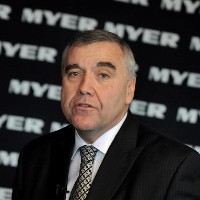

Myer has restructured its executive team this week in a bid to secure the company’s future in Australia.
With much speculation about the outlook for department stores in Australia, it is believed the company is using the restructure to plant possible candidates for the eventual succession of its chief executive Bernie Brookes.
The retail giant has nabbed three top executives for its senior leadership team: Andrew Flanagan, a former managing director of Zara’s parent company Inditex; Daniel Bracken, a former chief executive of Apparel Group; and Richard Umbers, who it’s poached from Australia Post, where he was the executive general manager in charge of e-commerce and parcels.
So, what can SMEs learn from Myer’s forward thought on its eventual changing of the guard?
SmartCompany spoke to Professor Ian O. Williamson from the Melbourne Business School at Melbourne University to find out the steps small business owners should take to plan their own succession
1. Start to think about your own mortality
Brookes announced last year his intention to step down from Myer’s top job in August this year, giving the company plenty of time to put in place some foundations for his departure.
“Part of succession planning is accepting you’re not going to be there anymore,” says Williamson. “Have the conversation early on: ‘what is the reality of how long I’ll be here?”
Williamson says it is not realistic to believe that you and your skillset will be the right choice to lead your business 20 years down the track.
The external environment of your company will also shift quickly and the skills a CEO needs to handle the changing landscape of your business will change, he says.
Williamson says it important to be as overt about the future of your business as possible.
2. Start to look for possible succession candidates
Bringing in big fashion players Flanagan and Bracken was likely a deliberate move by Myer to inject some top retail expertise into its fashion arm.
Williamson says the risk a smaller company would take in hiring someone for a leadership role from outside the company, is that they will likely overpay to secure the right candidate and the outsider may be less likely to understand the business. So it is prudent for smaller companies to look around their team for potential leaders.
“You need to consider, who wants to be in the business for that long? Who has the capability to show that breadth in their skills and who wants that responsibility?” says Williamson.
“If you are in the business of grooming someone for the role, rather than seeking them out, that will be at least a ten year journey,” he says.
Williamson says a chief executive will require at least two years’ experience in each critical area of your business.
“They don’t have to be expert in each area, but they would need some confidence to take on the role of CEO,” he says.
3. Balance the current needs of the business with future needs
For a larger company such as Myer, it may be easy to bring in the best outside candidates, but with fewer resources, small businesses often find it difficult to play the long game in management.
Williamson says business leaders will often struggle to balance the current needs of a business with its developmental needs. He says leaders will often be nervous about taking a possible succession candidate out of their current role if they think its key to the existing success of the business, which will frustrate potential leaders and stunt their growth with the company.
“You made an obligation to this person to give them a leadership role and then you end up punishing them because they are so successful in their current role,” he says.
“You must balance the needs of the organisation, which can sometimes be counter to its development.”


COMMENTS
SmartCompany is committed to hosting lively discussions. Help us keep the conversation useful, interesting and welcoming. We aim to publish comments quickly in the interest of promoting robust conversation, but we’re a small team and we deploy filters to protect against legal risk. Occasionally your comment may be held up while it is being reviewed, but we’re working as fast as we can to keep the conversation rolling.
The SmartCompany comment section is members-only content. Please subscribe to leave a comment.
The SmartCompany comment section is members-only content. Please login to leave a comment.